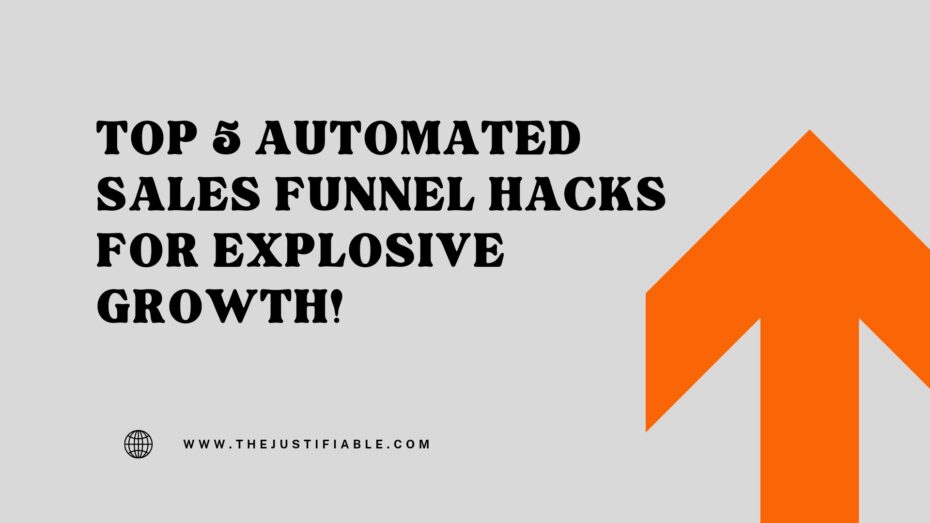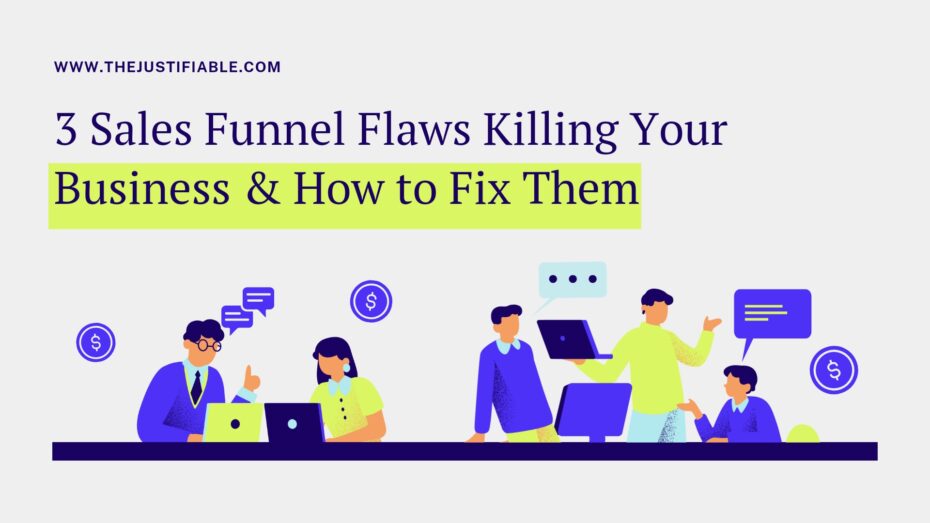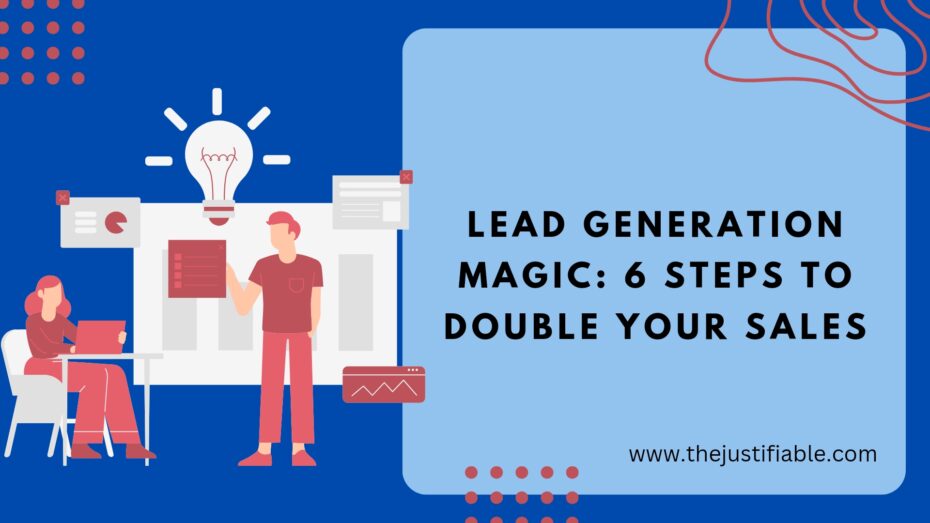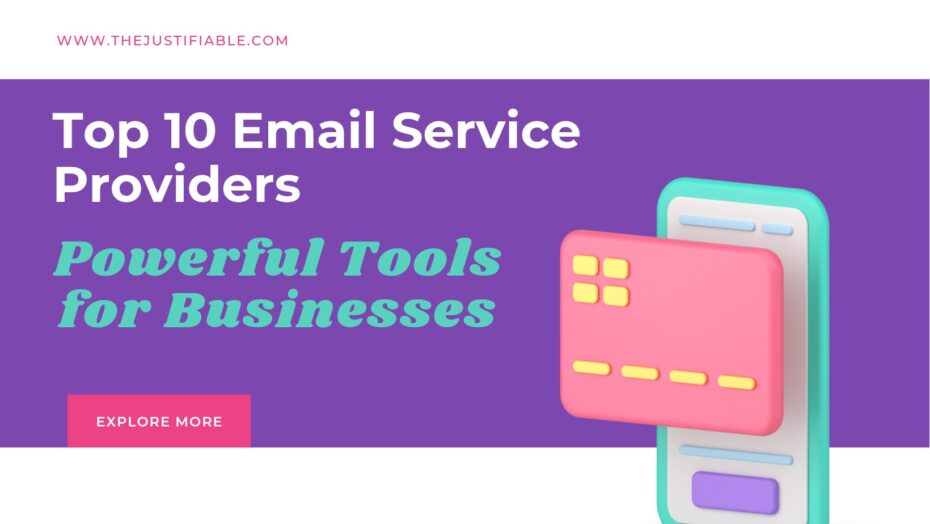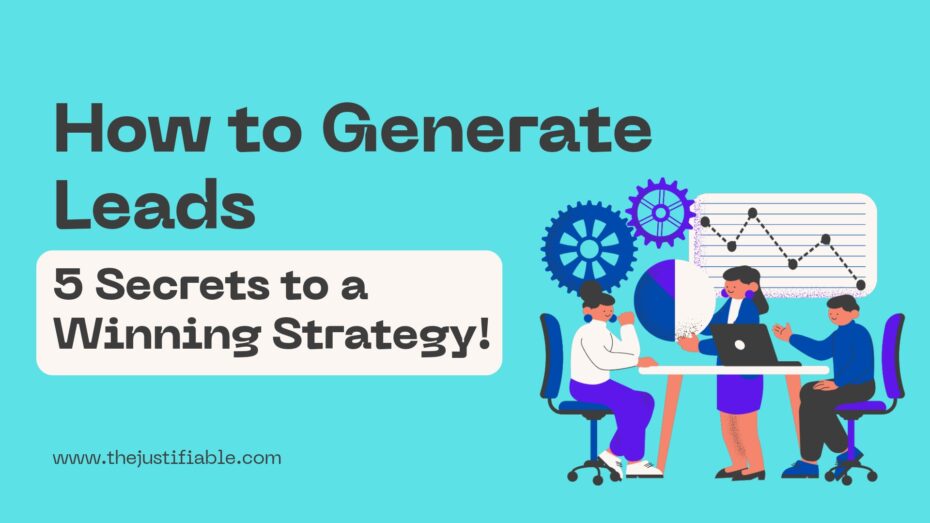Disclosure: This post contains affiliate links, which means that if you click on them and make a purchase, I will receive a commission. Read our Disclaimer for More.
Are you struggling to scale your business effectively? Wondering how an automated sales funnel could be the game-changer you need for explosive growth? You’re in the right place. In today’s fast-paced digital landscape, leveraging the power of automation in your sales funnel isn’t just a luxury—it’s a necessity. But how do you do it in a way that genuinely scales your business?
The concept of an automated sales funnel is simple: it’s a strategic approach to guiding potential customers through their buying journey, from the moment they first interact with your brand to the point of making a purchase, and beyond. By automating this process, you can consistently engage with your audience, nurture leads, and close sales without the need for constant manual intervention. This not only saves time but also significantly increases efficiency and conversion rates.
By the end of this guide, you’ll have a clear understanding of the five essential automated sales funnel hacks that can lead to explosive growth. Whether you’re a seasoned marketer looking to refine your strategy or a newcomer eager to make your mark, these insights will provide you with the knowledge and tools needed to significantly boost your business’s performance. Let’s dive in and explore how you can transform your sales process into a high-converting machine.
1. Boost Your Conversion by 150% with These Automated Sales Funnel Tweaks
Imagine increasing your conversion rates by a staggering 150%. It’s not just a dream; it’s a reality that can be achieved with the right tweaks to your automated sales funnel. The secret lies in understanding your audience’s needs and preferences, then adjusting your funnel to meet them at every turn. But where do you start, and what specific changes can lead to such remarkable improvements?
The first step is to analyze your current funnel’s performance. Identify where potential customers are dropping off and investigate the reasons behind these patterns. This could involve anything from a complicated checkout process to a lack of engaging content. By pinpointing these critical areas, you can begin to implement changes that directly address the issues, making the buying journey as smooth and compelling as possible.
One powerful tweak is the integration of personalized content and offers. In an era where consumers expect tailored experiences, generic messages no longer cut it. Utilize the data you have on your leads to create personalized emails, landing pages, and offers that speak directly to their interests and pain points. This level of customization significantly increases the likelihood of conversion, as it demonstrates an understanding and appreciation of the individual behind the screen.
Another crucial adjustment is optimizing your funnel for mobile users. With the majority of internet traffic now coming from mobile devices, it’s essential that every element of your funnel is mobile-friendly. From responsive design to fast-loading pages, ensuring a seamless mobile experience can dramatically boost your conversion rates. Mobile users are looking for convenience and speed, so by providing a smooth journey, you’re more likely to keep them engaged and willing to convert.
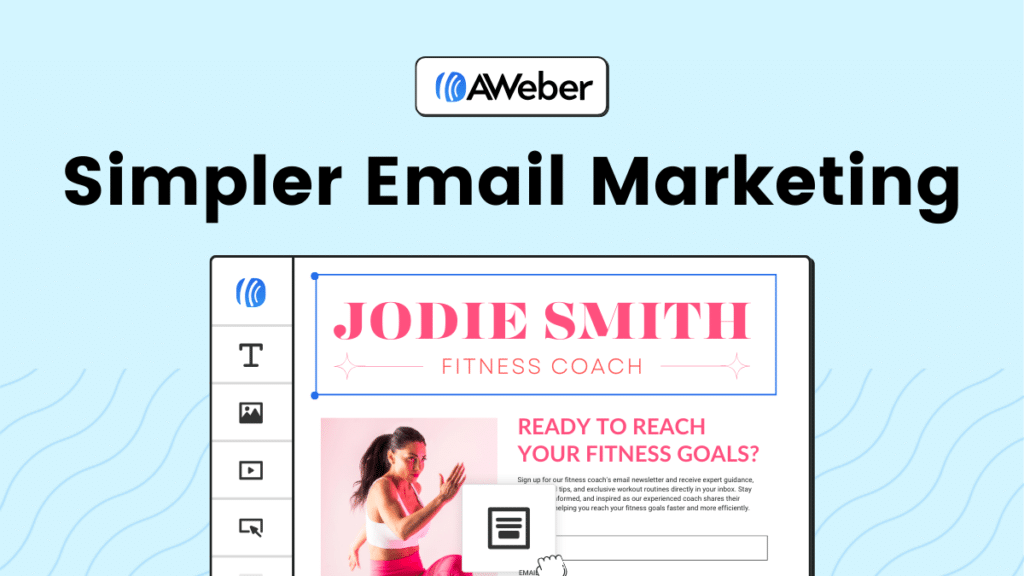

Implementing AI-Powered Lead Scoring for Precision Targeting
In the world of digital marketing, understanding which leads are most likely to convert is akin to having a crystal ball. But thanks to the advancements in artificial intelligence (AI), this level of insight is not just possible; it’s accessible. Implementing AI-powered lead scoring into your automated sales funnel is the key to unlocking precision targeting, ensuring you focus your efforts on the leads with the highest conversion potential. This strategic move not only optimizes your resources but significantly increases the efficiency of your sales process.
AI-powered lead scoring analyzes a variety of factors, including a lead’s behavior on your website, engagement with your content, and demographic information, to assign a score that indicates their likelihood to purchase. This automated process allows you to prioritize your outreach efforts, tailoring your approach to engage high-scoring leads with personalized communication and offers. The beauty of AI is its ability to learn and adapt over time, constantly refining the scoring criteria based on conversion outcomes, ensuring ever-improving accuracy and relevance.
For businesses looking to maximize the impact of their marketing efforts, adopting AI-powered lead scoring is a game-changer. It transforms a formerly intuitive process into a data-driven strategy, allowing for more precise targeting and better allocation of marketing resources. This means your sales team can focus on nurturing the most promising leads, significantly improving the ROI of your marketing campaigns and accelerating the growth of your business.
Streamline Your Customer Journey with Dynamic Content Personalization
In today’s digital marketplace, personalization is not just preferred; it’s expected. Consumers are bombarded with content daily, making it crucial for businesses to stand out by delivering tailored experiences. Streamlining your customer journey with dynamic content personalization is a powerful strategy within your automated sales funnel, enabling you to engage your audience with the right message, at the right time, in the right way. This approach not only captures attention but also fosters a deeper connection with your audience, dramatically enhancing the effectiveness of your marketing efforts.
Dynamic content personalization uses data about your customers’ behaviors, preferences, and interactions with your brand to create customized content experiences. Whether it’s a personalized email, a tailored landing page, or a custom recommendation, this level of personalization ensures that your audience sees content that resonates with their specific needs and interests. The result? A more engaging and satisfying customer journey that significantly boosts conversion rates.
Implementing dynamic content personalization requires a deep understanding of your audience, as well as the technology to deliver these customized experiences. However, the effort is well worth it. By making your customers feel understood and valued, you’re not only more likely to convert leads into sales but also to build loyalty and encourage repeat business. This strategy turns your automated sales funnel into a powerful engine for growth, driven by a deep connection with your customers.
2. Slash Lead Costs by 40% Using Automated Segmentation Strategies
Did you know that businesses leveraging advanced segmentation strategies can reduce their lead acquisition costs by up to 40%? This staggering statistic highlights the power of using automated segmentation within your sales funnel. In a world where every marketing dollar counts, optimizing your approach to segmenting can significantly impact your bottom line. By categorizing your leads based on specific criteria such as behavior, demographics, or engagement level, you can tailor your marketing efforts more effectively, ensuring you’re not wasting resources on uninterested or unqualified leads.
Automated segmentation strategies allow you to dynamically classify leads and customers, providing a more personalized marketing experience. This level of personalization not only enhances the effectiveness of your campaigns but also improves the overall customer journey. By targeting specific segments with messages that resonate with their particular needs and preferences, you’re more likely to capture their interest and move them down the funnel towards conversion.
Furthermore, the use of automation in this process ensures that your segmentation is both accurate and scalable. Traditional, manual segmentation methods are time-consuming and prone to error, making them unsuitable for businesses looking to grow. Automated tools, however, can handle vast amounts of data in real-time, continuously updating segments based on new information. This means your marketing efforts are always as targeted and efficient as possible.
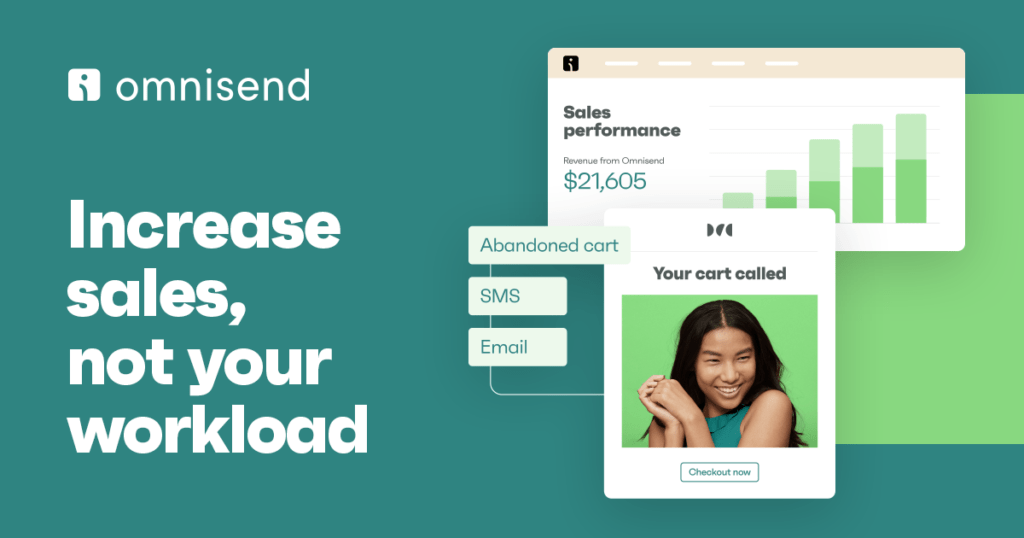

Leveraging Behavioral Data for Cost-Effective Lead Acquisition
Understanding the behavior of your leads can be a goldmine for any marketer. Leveraging behavioral data allows you to fine-tune your lead acquisition strategies, making them more cost-effective and efficient. This approach involves analyzing how potential customers interact with your brand, from the pages they visit on your website to the emails they open and beyond. By diving deep into this data, you can uncover valuable insights that inform your marketing decisions, helping you to attract leads more effectively and at a lower cost.
Behavioral data gives you the power to predict future actions of your leads, enabling you to create highly targeted campaigns that resonate deeply with your audience. For example, if you notice that a segment of your audience frequently engages with content about a specific topic, you can tailor your messaging and offers to match their interests. This relevance increases the likelihood of conversion, as your communications are directly addressing the needs and desires of your leads.
Moreover, leveraging behavioral data allows for a more dynamic and responsive marketing strategy. Instead of relying on static demographic information, you can adjust your tactics in real-time based on how leads are interacting with your brand. This agility ensures that your lead acquisition efforts are always optimized for the best possible performance, maximizing the effectiveness of every dollar spent.
Optimizing Ad Spend with Automated A/B Testing Tools
In the quest for marketing efficiency, optimizing ad spend is paramount. One of the most powerful tools at your disposal is automated A/B testing, which allows you to compare different versions of your ads, landing pages, or emails to determine which performs better. This methodical approach to testing enables you to make data-driven decisions about where to allocate your advertising budget, ensuring that every dollar is spent on the most effective strategies.
Automated A/B testing tools streamline the process of experimentation, making it easier and faster to optimize your ad spend. By systematically testing different elements of your marketing campaigns, from headlines to call-to-action buttons, you can identify what resonates best with your audience. This not only improves the performance of your ads but also increases the overall conversion rate of your sales funnel.
The beauty of using automated tools for A/B testing lies in their ability to run multiple tests simultaneously and continuously. This means you’re always learning and improving, fine-tuning your campaigns to achieve maximum efficiency. The insights gained from these tests can be applied across your marketing strategy, enhancing not just your ads but all aspects of your customer acquisition efforts.
Moreover, optimizing your ad spend with automated A/B testing not only reduces wastage but also increases your competitive advantage.
3. Triple Your Email Open Rates with Automation Magic
“Email has an ability many channels don’t: creating valuable, personal touches—at scale.” This statement encapsulates the transformative power of email in the digital marketing landscape. Yet, the magic truly happens when automation is applied, turning a standard email campaign into a powerhouse of engagement and conversion. With the right automated sales funnel strategies, tripling your email open rates isn’t just a goal; it’s an achievable reality. The integration of automation into your email marketing efforts can drastically change how your messages are received and acted upon by your target audience.
Automation allows for the timing of your emails to be optimized, ensuring that they land in your recipients’ inboxes at the moment they’re most likely to engage. This timing is not based on guesswork but on data-driven insights into your audience’s behavior and preferences. Moreover, automation enables a level of personalization and segmentation that is not feasible manually. By segmenting your audience based on their interactions with your brand, purchase history, or demographic information, you can tailor your messages to resonate deeply with each segment, significantly increasing the chances of your emails being opened.
But automation doesn’t just stop at sending emails. It extends to analyzing your campaigns, providing valuable feedback on what’s working and what isn’t. This continuous loop of sending, measuring, learning, and optimizing is what can lead to a tripling of your email open rates. The insights gained through this process allow you to refine your approach constantly, ensuring that your email marketing strategy is always evolving and improving.
The impact of tripling your email open rates goes beyond just the immediate benefit of increased engagement. It leads to a deeper connection with your audience, higher conversion rates, and ultimately, significant growth for your business.
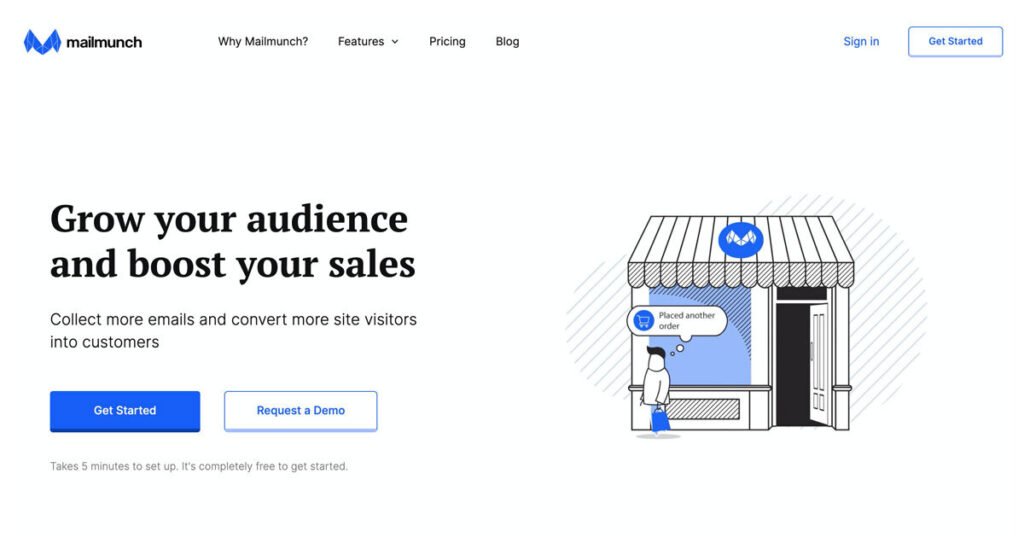

Crafting Irresistible Subject Lines Using Data Analytics
The subject line of an email is the first impression you make on your recipient. It’s the gatekeeper to your content, determining whether your email is opened or condemned to the abyss of the unread. Crafting irresistible subject lines is an art that, when supported by data analytics, becomes a powerful tool in your marketing arsenal. By analyzing the performance of past subject lines, you can identify patterns and preferences that resonate with your audience, turning guesswork into a science.
Data analytics enables you to understand not just which subject lines perform well, but why they do. This could be the use of specific keywords, the length of the subject line, or the inclusion of personalization elements like the recipient’s name. By dissecting the components of successful subject lines, you can replicate and innovate on these formulas for future campaigns. This methodical approach ensures that your creativity is guided by insights, maximizing the impact of your efforts.
Moreover, the use of A/B testing, facilitated by automation tools, allows you to experiment with different subject line variations to see what works best. This real-time feedback loop is invaluable, providing a clear direction for optimizing your subject lines for higher open rates. The goal is not just to catch the eye but to spark enough curiosity that the recipient feels compelled to open the email.
Personalizing Email Campaigns for Maximum Engagement
In the realm of email marketing, personalization is the cornerstone of engagement. The era of one-size-fits-all email blasts is long gone, replaced by a new standard where emails speak directly to the individual needs and interests of each recipient. Personalizing your email campaigns is about seeing your audience not as a homogeneous group but as individuals with unique preferences and behaviors. This level of personalization not only elevates the recipient’s experience but also significantly boosts your campaign’s performance.
The power of personalization lies in its ability to make each recipient feel understood and valued. By leveraging the data you’ve collected through interactions, purchases, and engagements, you can tailor your content, offers, and messages to match the specific interests of your audience. This approach ensures that your emails are relevant and resonate with the recipient, increasing the likelihood of them taking the desired action.
Automation plays a crucial role in enabling this high degree of personalization at scale. Through automated systems, you can segment your audience based on various criteria and send targeted campaigns designed for each segment. This means that whether your recipient is a new subscriber, a loyal customer, or somewhere in between, they receive content that feels crafted just for them.
Beyond just personalizing the content, consider the timing and frequency of your emails. Automation tools allow you to send emails based on triggers or actions taken by the recipient, ensuring that your communication is timely and contextually relevant. This thoughtful approach to email personalization fosters a stronger connection with your audience, driving engagement, loyalty, and ultimately, conversions.
4. Maximize Customer Lifetime Value with Automation-Enhanced Upsells
Just as a skilled gardener knows the right time to prune a plant to encourage growth, a savvy marketer understands the importance of timing and precision in offering upsells to maximize customer lifetime value. Automation-enhanced upsells are the tools that allow you to nurture your customer base meticulously, ensuring that every interaction adds value and fosters growth. This strategic approach to upselling, powered by automation, not only increases revenue but also deepens customer relationships, turning one-time buyers into loyal advocates.
Implementing automation in your upsell strategy allows for a level of personalization and timing that manual processes simply cannot match. By analyzing customer data, automated systems identify the most opportune moments and the most relevant products or services to offer as upsells. This means your customers receive offers that feel tailor-made for them, significantly increasing the likelihood of acceptance. It’s a win-win situation: customers feel understood and valued, and businesses enjoy increased revenue.
Moreover, automation enables consistent and ongoing engagement with your customer base, keeping your brand top-of-mind. Through automated email sequences, for example, you can gently guide your customers towards higher-value products or services that complement their previous purchases. This method of nurturing leads to a natural progression in the customer journey, enhancing their experience and your bottom line.
But automation-enhanced upsells aren’t just about increasing transaction values; they’re also about building a sustainable business model. By focusing on the lifetime value of a customer rather than just a single transaction, you’re investing in the future of your business. Automation ensures that this approach is scalable, allowing you to maintain a high level of personalization and service as your customer base grows.
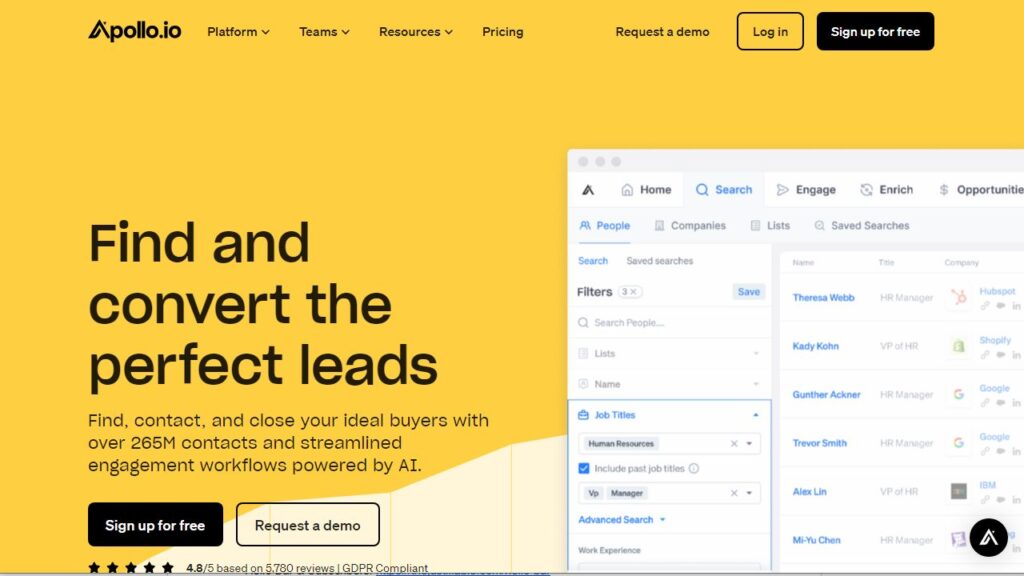

Integrating Smart Upsell Algorithms into Your Sales Process
Integrating smart upsell algorithms into your sales process is like having a highly skilled sales assistant who knows your customers better than they know themselves. This assistant isn’t just guessing what your customers might like; it’s using data-driven insights to make informed recommendations that are likely to be met with enthusiasm. By leveraging the power of AI and machine learning, these algorithms analyze customer behavior, purchase history, and preferences to identify upselling opportunities that feel natural and relevant.
The beauty of smart upsell algorithms lies in their ability to learn and adapt over time. With each interaction, they become more attuned to the nuances of customer preferences, refining their recommendations to increase both conversion rates and customer satisfaction. This ongoing optimization process ensures that your upselling efforts become more effective with every transaction, constantly pushing the boundaries of what you can achieve with your sales process.
Implementing these algorithms into your sales process also streamlines the upselling effort, making it more efficient and less intrusive. Customers are presented with upsell options at just the right moment, in a way that enhances their experience rather than interrupting it. This subtlety is key to successful upselling; it feels less like a sales pitch and more like a helpful suggestion, increasing the likelihood of a positive response.
Timing Your Upsells Perfectly with Behavioral Triggers
Timing is everything when it comes to effective upselling, and using behavioral triggers to time your upsells is like having an impeccable sense of rhythm in a symphony of sales. These triggers are specific actions taken by customers that signal their readiness for an upsell, such as reaching a certain milestone, making a repeat purchase, or engaging with a particular piece of content. By identifying and acting on these triggers, you can present upsell offers at the moment your customers are most receptive.
Behavioral triggers are rooted in understanding the customer journey inside and out. This deep insight allows you to anticipate needs and offer solutions before the customer even realizes they need them. It’s a proactive approach that feels personalized and thoughtful, enhancing the customer’s experience with your brand. When an upsell is triggered by a customer’s own actions, it feels more like a natural next step rather than a sales pitch, greatly increasing the chances of conversion.
The use of automation to manage and respond to these triggers ensures that no opportunity is missed. Whether it’s sending an automated email after a customer has made their third purchase or offering a premium version of a product they’ve been using for six months, automation makes it possible to execute a timely and relevant upselling strategy at scale. This efficiency means you can consistently capitalize on upsell opportunities across your customer base, maximizing revenue potential.
5. Reduce Cart Abandonment Rates by Over 50% with Automated Reminders
Believe it or not, nearly 70% of online shopping carts are abandoned before the purchase is complete. This staggering statistic reveals a significant challenge for e-commerce businesses but also highlights a tremendous opportunity for growth. By implementing automated reminders, you can dramatically reduce cart abandonment rates, recapturing potential sales and boosting your bottom line. Automated reminders, such as emails and push notifications, serve as gentle nudges to remind customers of what they’ve left behind, effectively encouraging them to complete their purchases.
The first step in combating cart abandonment is to understand the reasons behind it. From unexpected shipping costs to a complicated checkout process, identifying these factors is crucial for tailoring your automated reminders in a way that addresses these concerns and nudges customers towards completion. By integrating personalized messages that acknowledge and offer solutions to these potential hurdles, your reminders can become not just a prompt to return but a persuasive tool that increases conversion rates.
Automation plays a key role in this strategy by ensuring that reminders are sent out at optimal times. Timing is everything when it comes to re-engaging customers. Send a reminder too soon, and it might feel pushy; too late, and the customer might have lost interest or found an alternative. Automated systems can analyze customer behavior to determine the best timing for sending these reminders, increasing the likelihood that the customer will return to their cart.
Furthermore, automation allows for A/B testing of different reminder strategies to see which are most effective. This could involve varying the content of the messages, the timing of their delivery, or even the frequency at which they’re sent. Through continuous testing and refinement, you can develop a highly effective cart recovery strategy that significantly reduces abandonment rates.
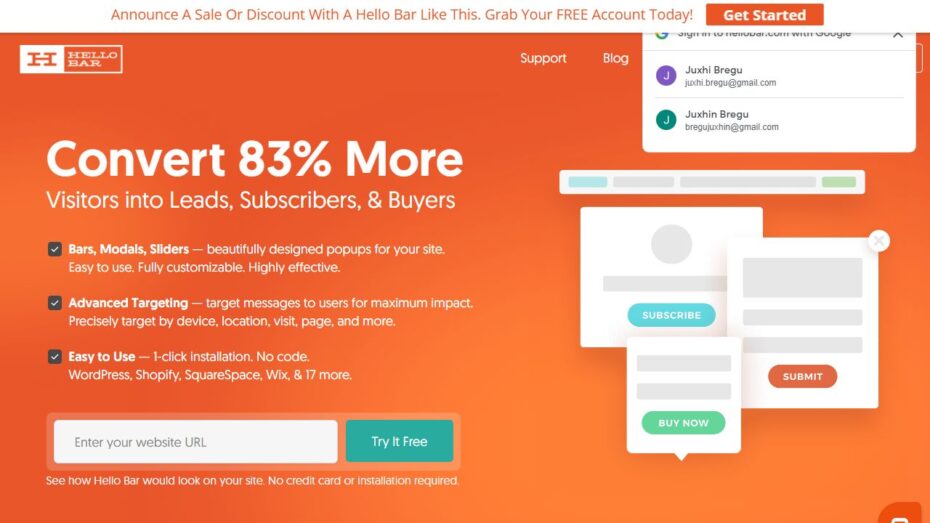

Setting Up Effective Cart Recovery Email Sequences
Cart recovery email sequences are like a lighthouse guiding lost ships back to shore. They serve as a beacon, reminding customers of the items they’ve left behind and illuminating the path back to their abandoned carts. Setting up an effective sequence involves more than just a single reminder; it requires a carefully crafted series of emails that engage, persuade, and convince customers to complete their purchases.
The first email in the sequence is crucial. It should be sent within a few hours of the cart abandonment, striking while the iron is hot and the customer’s interest is still high. This email can be a simple reminder of the items left in the cart, possibly including images of the products to reignite the customer’s desire. Personalization here can significantly increase the email’s effectiveness, making the message feel tailored to the individual.
Subsequent emails should add value and gently increase the urgency. Consider including a limited-time offer, such as a discount code or free shipping, to incentivize the customer to act. Customer testimonials or reviews of the abandoned products can also be powerful, providing social proof that reassures the customer of their choice. Each email should build on the last, creating a compelling narrative that leads the customer back to their cart.
The final email in the sequence is your last chance to convert the abandoned cart into a sale. This message should convey a sense of urgency, highlighting that the offer or the products themselves might not be available much longer. It’s also important to ensure that the checkout process is as smooth and frictionless as possible, removing any potential barriers that might deter the customer from completing their purchase.
Using Push Notifications to Re-Engage Potential Customers
Push notifications are like a tap on the shoulder in a crowded room; they’re a direct way to capture attention and convey a message. In the context of reducing cart abandonment, push notifications can be an incredibly effective tool for re-engaging potential customers. Unlike emails, which can get lost in a cluttered inbox, push notifications appear directly on the user’s device, making them hard to ignore and providing an immediate pathway back to their abandoned cart.
To use push notifications effectively, it’s important to craft your message carefully. The notification should be concise, clear, and compelling, with a strong call to action that encourages the user to take immediate steps. Personalization can enhance the impact of push notifications, using the customer’s name and specific details about the abandoned items to make the message more relevant and engaging.
Timing is also crucial with push notifications. Sending them at the right moment can significantly increase their effectiveness. This could mean targeting times when the user is most likely to be active on their device or waiting until they’re likely to be considering a purchase. The goal is to find the sweet spot where the reminder is both timely and welcome.
Finally, it’s vital to balance the urgency and frequency of push notifications to avoid overwhelming or annoying your customers. Too many notifications can lead to users disabling them altogether, while too few might not effectively capture their attention. Finding the right frequency requires understanding your customers’ preferences and behaviors, possibly through testing different strategies to see what works best.
Implementing Your Automated Sales Funnel for Explosive Growth
Are you ready to unlock the full potential of your online business and drive explosive growth? Implementing an automated sales funnel might just be the game-changer you need. In today’s digital age, where the competition for attention is fierce, the ability to streamline and automate your sales process can significantly amplify your marketing efforts.
An automated sales funnel is not just a tool; it’s a strategy that, when executed correctly, can transform your approach to digital marketing, lead generation, and customer conversion. By leveraging the power of automation, you’re able to nurture leads effectively, move them through the sales process with precision, and ultimately, convert them into loyal customers, all while saving time and resources.
The beauty of an automated sales funnel lies in its efficiency and scalability. It allows you to consistently engage with your audience, provide them with valuable content, and guide them towards making a purchase decision without manual intervention at every step. This constant nurturing process is key to building trust and establishing a strong relationship with your potential customers. Moreover, automation ensures that no lead is left behind, increasing your conversion rates and maximizing your ROI.
To truly reap the benefits of an automated sales funnel, it’s essential to understand the components that make up the funnel, from the awareness stage at the top to the conversion stage at the bottom. Each part of the funnel requires a tailored approach, with content and interactions designed to move the potential customer closer to a purchase. Automation tools and software can help to deliver these targeted messages at the right time, track the performance of your funnel, and provide insights that can be used to refine your strategy over time.
Step-by-Step Guide to Setting Up Your First Automated Funnel
Setting up your first automated sales funnel might seem daunting, but with a step-by-step guide, you’ll find it’s more straightforward than you think. The key to success lies in planning, preparation, and understanding your audience. By breaking down the process into manageable steps, you can create a funnel that not only attracts potential customers but also guides them smoothly towards making a purchase.
The first step in setting up your automated funnel is to define your target audience clearly. Understanding who you are trying to reach is crucial for creating content and messages that resonate. Consider their needs, pain points, and where they are in the buying journey. This knowledge will inform every other aspect of your funnel, from the lead magnet you use to attract them to the final nudge that convinces them to convert.
Next, you need to create a compelling lead magnet. This is an offer, such as a free ebook, webinar, or trial, that entices your target audience to provide their contact information. Your lead magnet should provide genuine value and address a specific need or problem that your audience faces. Once you have their contact information, you can begin the process of nurturing these leads through your funnel.
The nurturing process involves a series of emails or other communications designed to build trust, provide value, and gradually guide leads towards making a purchase. Automation software plays a crucial role here, allowing you to schedule these communications and ensure they are personalized and timely. Each message should be crafted with the goal of moving your leads one step closer to the bottom of the funnel.
Finally, it’s time to convert your nurtured leads into customers. This stage involves presenting a well-timed offer that is too good to pass up. Whether it’s a discount, a bonus, or simply the opportunity to purchase a highly desirable product, your offer should be the culmination of all the preceding steps in your funnel. At this point, your leads are educated, engaged, and ready to make a decision. With a well-constructed automated sales funnel, that decision is far more likely to be in your favor.
Monitoring and Optimizing Your Funnel for Continuous Improvement
In the ever-evolving landscape of digital marketing, setting up an automated sales funnel is just the beginning. The real magic happens when you commit to monitoring and optimizing your funnel for continuous improvement. Think of your funnel as a living, breathing entity in the digital ecosystem. Just like any organism, it needs regular check-ups and adjustments to thrive. The goal is to ensure that your automated sales funnel not only maintains its health but also grows stronger and more effective over time, adapting to changes in customer behavior and market dynamics.
The first step in this ongoing process is to closely monitor the performance of your funnel. This involves tracking key metrics such as conversion rates, click-through rates, email open rates, and, most importantly, the ROI of the funnel. Tools and software designed for funnel analytics can provide you with real-time data, allowing you to see where leads are dropping off and which parts of your funnel are performing well. This data is invaluable, as it highlights both successes and areas for improvement.
Once you’ve identified areas that need tweaking, the next step is to optimize. This could mean adjusting your email sequences for better engagement, refining your landing pages for higher conversion rates, or even revising your lead magnet to attract more qualified leads. Optimization is a continuous process, driven by data and feedback from your audience. It’s about making small, incremental changes that collectively have a significant impact on the effectiveness of your funnel.
One powerful strategy for optimization is A/B testing. By creating different versions of your emails, landing pages, or even call-to-action buttons, you can test what resonates best with your audience. A/B testing removes the guesswork from optimization, allowing you to make evidence-based decisions that enhance the performance of your funnel. It’s a methodical approach that, when implemented correctly, can lead to dramatic improvements in your funnel’s efficiency.
Overcoming Common Challenges in Automated Sales Funnel Implementation
Implementing an automated sales funnel is akin to setting sail on the open sea. The journey promises vast opportunities and treasures, but like any seasoned sailor knows, navigating through uncharted waters comes with its fair share of challenges. These challenges, from selecting the right automation software to ensuring seamless integration with your existing tech stack, can seem daunting at first.
However, with the right strategies and a bit of guidance, overcoming them is not only possible but can also propel your business towards unprecedented growth and efficiency. Let’s embark on this voyage together, charting a course through the common hurdles of automated sales funnel implementation, and discovering how to transform obstacles into stepping stones for success.
Navigating the Complexities of Automation Software Selection
Choosing the right automation software for your sales funnel is like finding the perfect compass for an ocean voyage. The market is flooded with tools, each promising to guide you to your desired destination, but not all are created equal. The key to navigating this sea of options lies in understanding your business’s unique needs and objectives.
Start by outlining the specific features you require, such as email marketing capabilities, landing page builders, or lead scoring systems. Consider the scale of your operations and the level of customization you need. This initial map will guide you through the vast options, helping you to identify software that aligns with your course.
The next step involves diving deeper into the potential automation platforms. Look beyond the surface features and explore the user experience, integration capabilities, and the level of support offered. A tool might have all the features you need, but if it’s not user-friendly or compatible with your existing systems, it could end up steering you off course. Engage with demos, take advantage of free trials, and read reviews from other businesses that have sailed similar paths. This reconnaissance will provide valuable insights and help you make an informed decision.
Cost is another critical factor to consider when selecting automation software. Investing in the cheapest option might save you money upfront, but if it doesn’t meet all your needs or requires extensive customization, the long-term costs could outweigh the initial savings. Conversely, the most expensive tools might offer more than you actually need, leading to wasted resources. Balance is key. Look for a solution that offers the best value, providing the features you need at a cost that fits your budget.
Finally, consider the future of your business and how the software can grow with you. The digital marketing landscape is constantly evolving, and your needs may change as your business expands. Opt for a platform that is not only a good fit for your current situation but also has the flexibility to adapt to future developments.
Ensuring a Seamless Integration with Your Existing Tech Stack
Integrating new automation software into your existing tech stack is like adding a new instrument to an orchestra. For the music to flow harmoniously, each instrument must be in tune and perfectly timed with the others. This integration is crucial for the success of your automated sales funnel, as disjointed systems can lead to inefficiencies, data silos, and a disjointed customer experience. The goal is to create a seamless symphony of tools that work together to optimize your sales process.
The first step in this integration process is to conduct a thorough audit of your current tech stack. Understand the capabilities and limitations of your existing tools, and identify any gaps that the new automation software will fill. This understanding will help you anticipate how the new tool will interact with your current systems, allowing you to plan for a smooth integration.
Next, consider the technical compatibility of the new software with your existing stack. Does it offer native integrations with the tools you’re already using? If not, are there APIs or third-party integration platforms that can bridge the gap? These technical considerations are crucial for ensuring that data can flow seamlessly between systems, enabling you to automate processes effectively and maintain a single source of truth for your customer data.
Collaboration between teams is also vital for successful integration. Often, different departments within a company use different tools, and the introduction of new software can impact various parts of the organization. Involve key stakeholders from the outset, ensuring that everyone understands how the new tool will be used and how it will affect their workflows. This collaborative approach not only facilitates smoother integration but also fosters buy-in and adoption across the company.
Finally, don’t underestimate the importance of training and support. Even with the most seamless technical integration, your team needs to know how to leverage the new tool effectively. Choose a software provider that offers comprehensive training resources and responsive customer support. Investing time in training will pay dividends, empowering your team to maximize the benefits of the new software and ensuring that your automated sales funnel operates at its full potential.
By carefully selecting your automation software and ensuring its seamless integration with your existing tech stack, you lay a solid foundation for a successful automated sales funnel.
Next Steps: Scaling Your Growth with Advanced Automated Funnel Strategies
As you stand on the brink of scaling your business, it’s time to look beyond the horizon and embrace advanced automated funnel strategies that promise not just growth but exponential expansion. The digital landscape is a vast ocean, and to navigate its currents successfully, you need more than just a map; you require a sophisticated compass that points you towards untapped opportunities and uncharted territories.
Advanced automated funnel strategies are your compass, guiding your journey from steady growth to explosive scaling by harnessing the power of technology and data-driven insights.
Exploiting AI and Machine Learning for Predictive Sales Insights
The future of sales and marketing lies in the ability to anticipate customer needs and trends before they even emerge. Exploiting AI and machine learning for predictive sales insights is akin to having a crystal ball that reveals the future desires of your market. By analyzing vast datasets and identifying patterns, AI can forecast future buying behaviors, allowing you to tailor your automated sales funnel to meet those needs proactively. This predictive capability transforms the way you engage with potential customers, enabling personalized experiences that resonate deeply and drive conversion.
Implementing AI and machine learning into your automated funnel isn’t just about leveraging technology; it’s about shifting to a more strategic, insight-driven approach to marketing. These technologies allow for the dynamic segmentation of your audience, ensuring that each individual receives the most relevant messaging at the optimal time. Furthermore, AI can optimize the timing and content of your communications, ensuring that your marketing efforts are not just efficient, but also incredibly effective.
The beauty of AI and machine learning lies in their continuous learning capabilities. As more data is collected, the algorithms become smarter, refining their predictions and enhancing their accuracy. This means that your automated sales funnel becomes more effective over time, constantly adapting to the evolving landscape of customer preferences and behaviors. It’s a strategy that not only scales your growth but also future-proofs your business against changing market dynamics.
However, harnessing AI for predictive sales insights requires a commitment to data quality and integrity. The insights you derive are only as good as the data you feed into your algorithms. Therefore, it’s crucial to establish robust data collection and management practices, ensuring that the information you use to fuel your AI-driven strategies is accurate, comprehensive, and timely. With a solid data foundation and a strategic approach to AI implementation, you can unlock unparalleled growth potential for your business.
Leveraging Cross-Channel Automation for Unparalleled Reach and Efficiency
In today’s fragmented digital environment, your customers are everywhere – scrolling through social media, reading emails, browsing websites, and more. Leveraging cross-channel automation is like casting a wide net across this vast digital sea, ensuring you reach your audience wherever they are. This approach to automation breaks down silos between different marketing platforms, creating a cohesive and integrated experience for your customers that seamlessly guides them through your sales funnel, irrespective of the channel they’re on.
Cross-channel automation relies on a unified strategy that coordinates your marketing efforts across all platforms. It ensures that your messaging is consistent, your branding is coherent, and your customer’s journey is smooth, regardless of how they interact with your business. By automating these interactions, you can deliver personalized experiences at scale, engaging your audience with the right message at the right time, across every channel.
One of the key benefits of cross-channel automation is the efficiency it brings to your marketing operations. Instead of managing separate campaigns in silos, you can create integrated campaigns that automate the delivery of your marketing messages across channels. This not only saves time and resources but also enhances the effectiveness of your marketing efforts, as it allows for a more strategic and coordinated approach to customer engagement.
Furthermore, cross-channel automation provides valuable insights into customer behavior across different platforms, offering a holistic view of the customer journey. This comprehensive understanding enables you to refine your marketing strategies, optimize your funnel, and deliver more targeted, effective communications. By embracing cross-channel automation, you’re not just expanding your reach; you’re also deepening your engagement with your audience, setting the stage for exponential growth and unparalleled efficiency in your marketing efforts.

